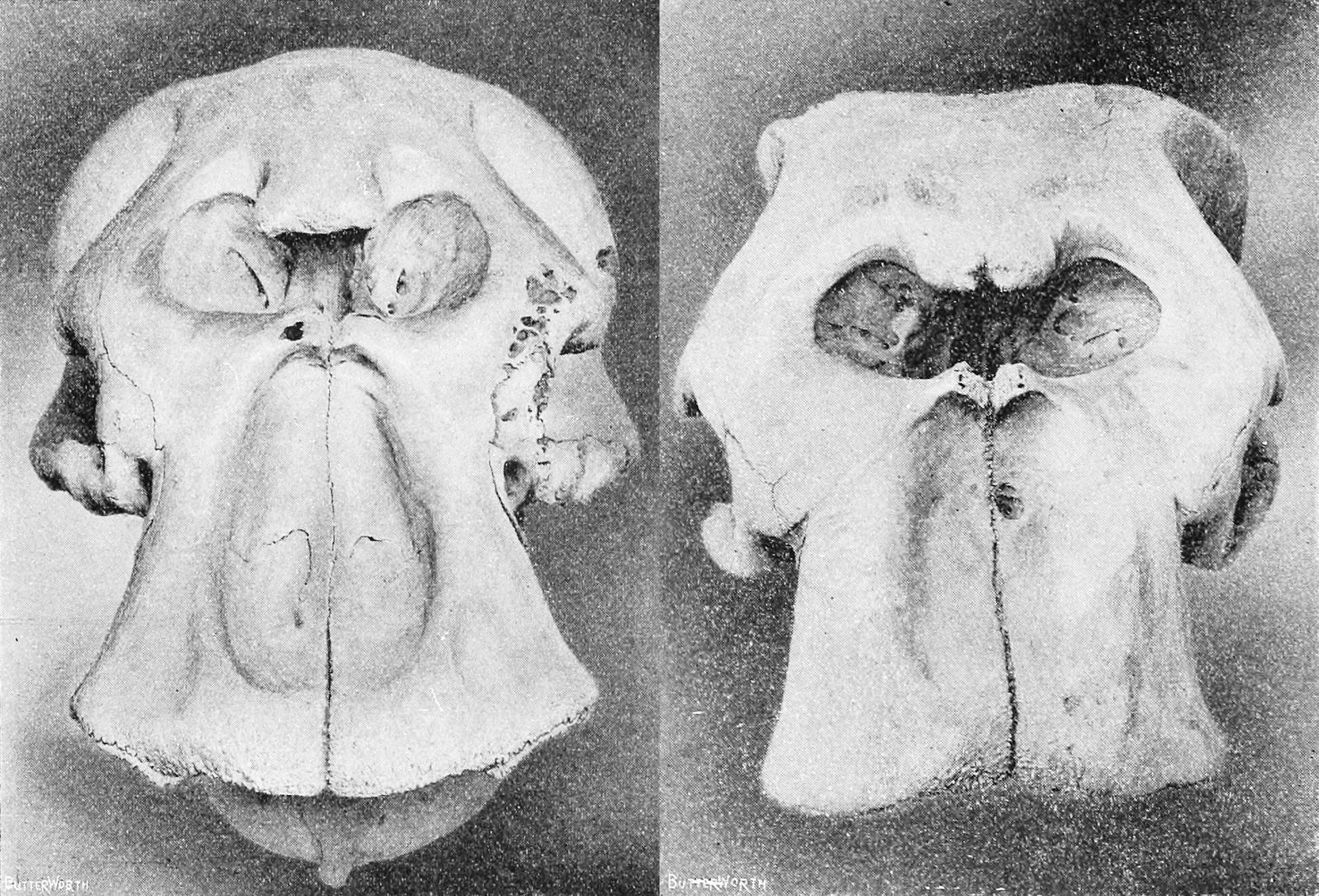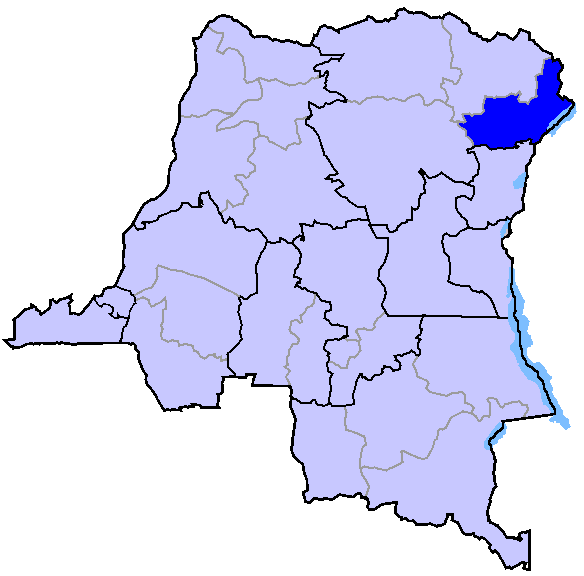|
Okapi Wildlife Reserve
The Okapi Wildlife Reserve is a wildlife reserve in the Ituri Forest in the north-east of the Democratic Republic of the Congo, near the borders with South Sudan and Uganda. At approximately 14,000 km2, it covers approximately one-fifth of the area of the forest. In 1996, the Okapi Wildlife Reserve was designated a UNESCO World Heritage Site, due to its large population of endangered okapis and its high overall biodiversity. Ecology The wildlife reserve makes up roughly one-fifth of the total area of the Ituri Forest. As a Pleistocene refugium, the forest contains dense evergreen and semi-evergreen forests, dominated by ''Mbau'' trees ('' Gilbertiodendron dewevrei''). The Nepoko, Ituri, and Epulu rivers flow through the reserve, surrounded by swamp forests. The granite outcrops in the north of the reserve protect critical habitat for ''Encephalartos ituriensis'', a threatened species of cycad. Because of its relatively stable climate during the repeated ice ages, the wi ... [...More Info...] [...Related Items...] OR: [Wikipedia] [Google] [Baidu] |
African Forest Elephant
The African forest elephant (''Loxodonta cyclotis'') is one of the two living African elephant species. It is native to humid forests in West Africa and the Congo Basin. It is the smallest of the three living elephant species, reaching a shoulder height of . Both sexes have straight, down-pointing tusks, which erupt when they are 1–3 years old. It lives in family groups of up to 20 individuals. Since it forages on leaves, seeds, fruit, and tree bark, it has been referred to as the 'megagardener of the forest'. It contributes significantly to maintain the composition and structure of the Guinean Forests of West Africa and the Congolese rainforests. The first scientific description of the species was published in 1900. During the 20th century, overhunting caused a sharp decline in population, and by 2013 it was estimated that less than 30,000 individuals remained. It is threatened by habitat loss, fragmentation, and poaching. The conservation status of populations varies acros ... [...More Info...] [...Related Items...] OR: [Wikipedia] [Google] [Baidu] |
Bantu Peoples
The Bantu peoples, or Bantu, are an ethnolinguistic grouping of approximately 400 distinct ethnic groups who speak Bantu languages. They are native to 24 countries spread over a vast area from Central Africa to Southeast Africa and into Southern Africa. There are several hundred Bantu languages. Depending on the definition of "language" or "dialect", it is estimated that there are between 440 and 680 distinct languages. The total number of speakers is in the hundreds of millions, ranging at roughly 350 million in the mid-2010s (roughly 30% of the population of Africa, or roughly 5% of the total world population). About 60 million speakers (2015), divided into some 200 ethnic or tribal groups, are found in the Democratic Republic of the Congo alone. The larger of the individual Bantu groups have populations of several million, e.g. the people of Rwanda and Burundi (25 million), the Baganda people of Uganda (10 million as of 2019), the Shona of Zimbabwe (15 million ), the Z ... [...More Info...] [...Related Items...] OR: [Wikipedia] [Google] [Baidu] |
Mbuti
The Mbuti people, or Bambuti, are one of several indigenous pygmy groups in the Congo region of Africa. Their languages are Central Sudanic languages and Bantu languages. Subgroups Bambuti are pygmy hunter-gatherers, and are one of the oldest indigenous people of the Congo region of Africa. The Bambuti are composed of bands which are relatively small in size, ranging from 15 to 60 people. The Bambuti population totals about 30,000 to 40,000 people. Many Batwa in various parts of the DRC call themselves Bambuti as well. There are three distinct subgroups: * The Sua (also Kango, or Mbuti), who speak a dialect (or perhaps two) of the language of a neighboring Bantu people, Bila. They are located centrally and are eponymous of the larger group. * The Efé, who speak the language of the neighboring Central Sudanic Lese. * The Asua, speakers of the Mangbetu (Central Sudanic) Asua language. Environment The Mbuti population live in the Ituri, a tropical rainforest cov ... [...More Info...] [...Related Items...] OR: [Wikipedia] [Google] [Baidu] |
Congo Peafowl
The Congo peafowl (''Afropavo congensis''), also known as the African peafowl or ''mbulu'' by the Bakôngo, is a species of peafowl native to the Congo Basin. It is one of three peafowl species and the only member of the subfamily Pavoninae native to Africa. It is listed as Vulnerable on the IUCN Red List. History Dr. Chapin noticed that the native Congolese headdresses contained long reddish-brown feathers that he could not identify with any previously known species of bird. Later, Chapin visited the Royal Museum of Central Africa and saw two stuffed specimens with similar feathers labeled as the 'Indian peacock' which he later discovered to be the Congo peafowl, a completely different species. In 1955 Chapin managed to find seven specimens of the species. The Congo peafowl has physical characteristics of both the peafowl and the guineafowl, which may indicate that the species is a link between the two families. Description The male (pea''cock'') of this species is a lar ... [...More Info...] [...Related Items...] OR: [Wikipedia] [Google] [Baidu] |
Endemic
Endemism is the state of a species being found in a single defined geographic location, such as an island, state, nation, country or other defined zone; organisms that are indigenous to a place are not endemic to it if they are also found elsewhere. For example, the Cape sugarbird is found exclusively in southwestern South Africa and is therefore said to be ''endemic'' to that particular part of the world. An endemic species can be also be referred to as an ''endemism'' or in scientific literature as an ''endemite''. For example ''Cytisus aeolicus'' is an endemite of the Italian flora. ''Adzharia renschi'' was once believed to be an endemite of the Caucasus, but it was later discovered to be a non-indigenous species from South America belonging to a different genus. The extreme opposite of an endemic species is one with a cosmopolitan distribution, having a global or widespread range. A rare alternative term for a species that is endemic is "precinctive", which applies to ... [...More Info...] [...Related Items...] OR: [Wikipedia] [Google] [Baidu] |
Giant Forest Hog
The giant forest hog (''Hylochoerus meinertzhageni''), the only member of its genus (''Hylochoerus''), is native to wooded habitats in Africa and is generally considered the largest wild member of the pig family, Suidae; however, a few subspecies of the wild boar can reach an even larger size. Despite its large size and relatively wide distribution, it was first described only in 1904. The specific name honours Richard Meinertzhagen, who shot the type specimen in Kenya and had it shipped to the Natural History Museum in England. Description The giant forest hog is, on average, the largest living species of suid. Adults can measure from in head-and-body length, with an additional tail length of . Adults stand in height at the shoulder, and can weigh from .Novak, R. M. (editor) (1999). ''Walker's Mammals of the World.'' Vol. 2. 6th edition. Johns Hopkins University Press, Baltimore. pp. 1059–1060. Kingdon, J. (1997). ''The Kingdon Guide to African Mammals.'' Academic Press ... [...More Info...] [...Related Items...] OR: [Wikipedia] [Google] [Baidu] |
Bates's Pygmy Antelope
Bates's pygmy antelope (''Nesotragus batesi''), also known as the dwarf antelope, pygmy antelope''The New Encyclopaedia of Mammals'' D MacDonald 2002 Oxford or Bates' dwarf antelope, is a very small antelope living in the moist forest and brush of Central and West Africa. It is in the same genus as the suni. Description Adult antelope weigh about , and are long, with a tail length of . Only males have horns, about long. Their coat is shiny dark chestnut on the back and lighter toward the flanks. Male antelope are generously bigger than females. Distribution and habitat Bates pigmy antelope is native to tropical Central Africa. The range is separated into three distinct areas; southeastern Nigeria; the lower part of the Congo Basin; and northeastern Democratic Republic of Congo extending into western Uganda. Its typical habitat is humid lowland forest where it favours dense undergrowth. It also inhabits plantations, secondary forest, cleared areas and areas round human habita ... [...More Info...] [...Related Items...] OR: [Wikipedia] [Google] [Baidu] |
Bongo (animal)
The bongo (''Tragelaphus eurycerus'') is a herbivorous, mostly nocturnal forest ungulate. Bongos are characterised by a striking reddish-brown coat, black and white markings, white-yellow stripes and long slightly spiralled horns. They are the only tragelaphid in which both sexes have horns. They have a complex social interaction and are found in African dense forest mosaics. Native to Africa, they are the third-largest antelope in the world. The western or lowland bongo, ''T. e. eurycerus'', faces an ongoing population decline, and the IUCN Antelope Specialist Group considers it to be Near Threatened on the conservation status scale. The eastern or mountain bongo, ''T. e. isaaci'', of Kenya, has a coat even more vibrant than that of ''T. e. eurycerus''. The mountain bongo is only found in the wild in a few mountain regions of central Kenya. This bongo is classified by the IUCN Antelope Specialist Group as Critically Endangered, with fewer individuals in the wild than in ca ... [...More Info...] [...Related Items...] OR: [Wikipedia] [Google] [Baidu] |
Water Chevrotain
The water chevrotain (''Hyemoschus aquaticus''), also known as the fanged deer, is a small ruminant found in tropical Africa. This is the only species in the genus ''Hyemoschus''. It is the largest of the 10 species of chevrotains, basal even-toed ungulates which are similar to deer, but are barely larger than small dogs. Description Unusually for most mammals, female water chevrotains are larger than males. On average, they weigh over 2 kg more than the 10-kg males. Their body length is about 85 cm, and their shoulder height is around 35 cm. Water chevrotains have a rich, sleek, red-brown coat on top, and the underside of the coat is white. On the body is a pattern of white stripes that runs horizontally from the shoulder to the tail, with vertical rows of white stripes in the back. The chin, throat, and chest are covered in very coarse hair with a pattern of white V shapes. The back end of the water chevrotain has many powerful muscles and is higher than the sh ... [...More Info...] [...Related Items...] OR: [Wikipedia] [Google] [Baidu] |




.jpg)

